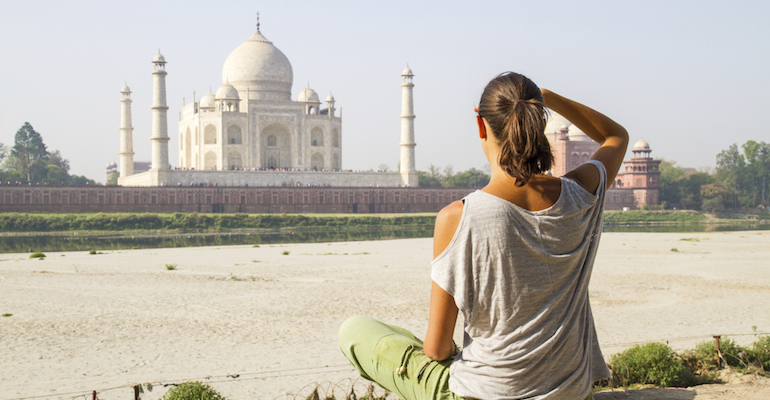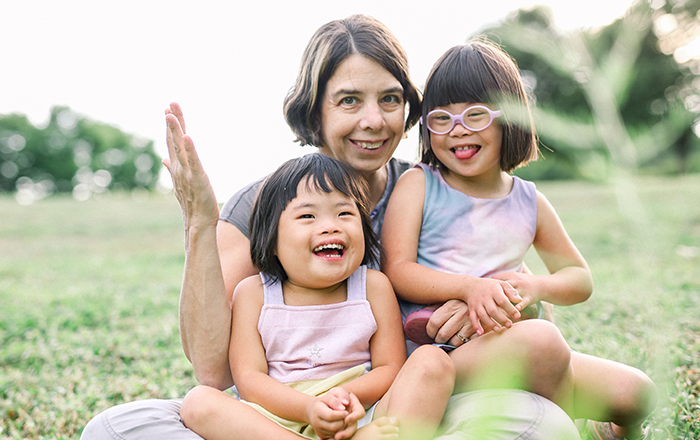At the age of four months I was adopted by my parents — blond-haired, blue-eyed people who did their best to provide me with cultural pride and knowledge of my homeland. Being raised in a racially mixed family made me open and tolerant of differences. Yet I often felt out of place because of my race.
I grew up in a suburb of Portland, Oregon, in a predominantly white community with a growing Latino population. Latinos often presumed that I was one of them, but I knew that I couldn’t claim their community as my own. Although my high school was diverse, there was only one other Indian girl — and she was raised in a traditional Indian home and had much lighter skin than mine. Here, too, my dark skin set me apart.
I recall times, as a child, being followed from store to store at the mall by security officers who could not believe that the white-skinned man accompanying me was actually my father. As I grew older, the white, blonde, blue-eyed Barbie image of American womanhood seemed an ideal I could never achieve. My brown skin felt like a dirty mark, almost a curse. In middle school and high school, I knew I wasn’t the girl that most boys wanted to date. Others were attracted to me for my exotic look only.
My parents tried introducing me to Indian art, dance, cooking, and dress, but these things left me cold. I took no pride in being Indian. I wanted nothing to do with activities with other adopted Indian kids. I remember participating reluctantly in a slumber party with other Indian girls. When all six of us walked into a pizza place, everyone turned around and stared. Although it felt good to be with others like me, I never wanted to repeat the experience when it was offered.
In addition to my feelings of racial and cultural confusion, lack of information about my birth parents caused me pain. They had abandoned me right after my birth, in a box, at a medical clinic in Calcutta.
Finally, at age 21, I felt emotionally ready to return to India. Although my parents had encouraged me to go from the time I turned 18, I had always declined. I really didn’t want to experience firsthand the poverty I had come from. I was scared that it would shake my defenses. During the long flight to India, my mantra was, “I’m an American citizen. I’m an American citizen.”
When I stepped outside the airport in Bombay, I realized how far I had come from the only home I had ever known. I had never seen so many brown people in my life, let alone so many Indians. In New Delhi, people swarmed the streets at 6:30 in the morning. Vendors hawked their products, and young women with babies begged for food. A little girl about four years old, malnourished, with no shoes or shirt in cold weather, tapped her little hands on our taxi window, begging for food. I could only stare, unable even to cry. I will never, ever forget her eyes, hollow, haunting, with nothing behind them but misery. I struggled to understand how people could stand by while others were so obviously starving.
We toured the Taj Mahal — the most magnificent structure I had ever seen. And then it hit me: my people built it. I began to feel a relationship with India and its people. Although I had been warned that the poverty and open disregard for human life in Calcutta, the city of my birth, would be difficult, I found it one of the most beautiful cities I have ever seen.
I called my mother and said, through my tears, “These are my people, this is my culture.” I felt proud of their struggle for survival and their sense of community. I had a great urge to be out on the streets, to mingle with the people, eat the food, and buy the clothing. I felt a swell of pride at being a Bengali born in Calcutta, and a connection to the city’s 14.9 million inhabitants.
We met an old friend who had worked for the International Mission of Hope, the agency that coordinated my adoption. He took me back to the original IMH orphanage and told one of the ayas (caregivers), Madhu, who I was. Remarkably, she remembered my nursery name — she had cared for me 21 years before! I embraced her tightly and didn’t want to let go. I saw my name in an IMH ledger book from 1979. It showed my Indian name, the names of my adopting parents, their address, and our dates for leaving India, bound for America.
From the time that I was old enough to understand that I had come from another woman’s stomach, I had assumed that my birth mother lived on the streets and was among the poorest of the poor. Because there were no pictures, letters, or even names left for me to take on my journey to America, I felt that she could not have wanted me. Who was she? Why did she abandon me? These questions, and the confusion and pain they conjured up, were always with me.
In Calcutta, I learned that many women who had babies at local clinics came from middle class backgrounds. They faced the prospect of ostracism if they bore a child out of wedlock. Realizing that my birth mother might well have been educated enough to read and write left me feeling better about myself. I felt closer to my birth mother, but also angry at her for not leaving me any trace of herself.
While visiting an orphanage in Kottaym, I met a woman, about my age, who had given birth to a baby boy 15 days earlier. Like my birth mother years before, she was placing her baby for adoption. I listened intently as she was asked if she would like to receive letters and pictures of her child after his adoption. She smiled broadly and said she would. I could see that she loved her child deeply. My eyes welled with tears of sadness and anger — for myself, for her, and for the baby.
On the last day of the trip, we met Sister Theresa of the Tender Loving Care Home at the airport in Hyderabad. She brought two babies for us to escort home. When Sister Theresa placed one of them in my arms, I began to cry. I knew the baby was losing her country and culture and would have to search for her identity as I have done. But I had also come to appreciate everything that I, and other adopted children, have gained by leaving India. Observing my people struggle with poverty, disease, hunger, and sexism, I understand the source of my survival skills. I will always struggle with racial identity in the United States, but I know my country and my people are only an airplane trip away. This knowledge is a sanctuary in my mind.
This piece is reprinted with permission from the Journeys of the Heart Adoption Services newsletter, Heartstrings.



